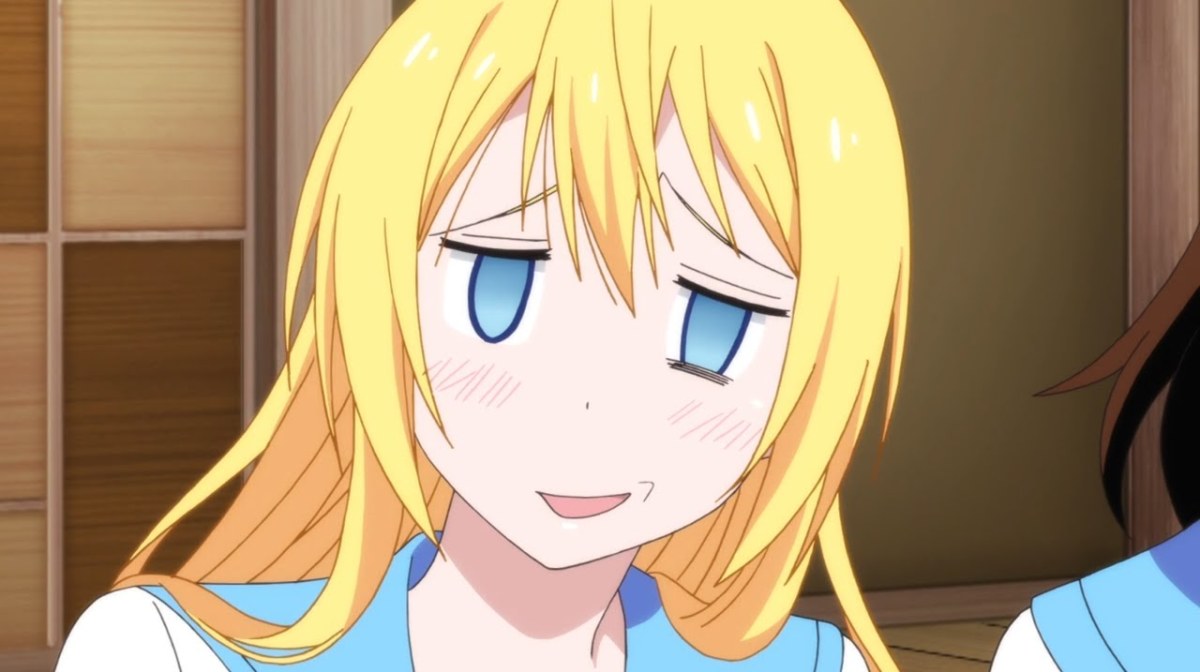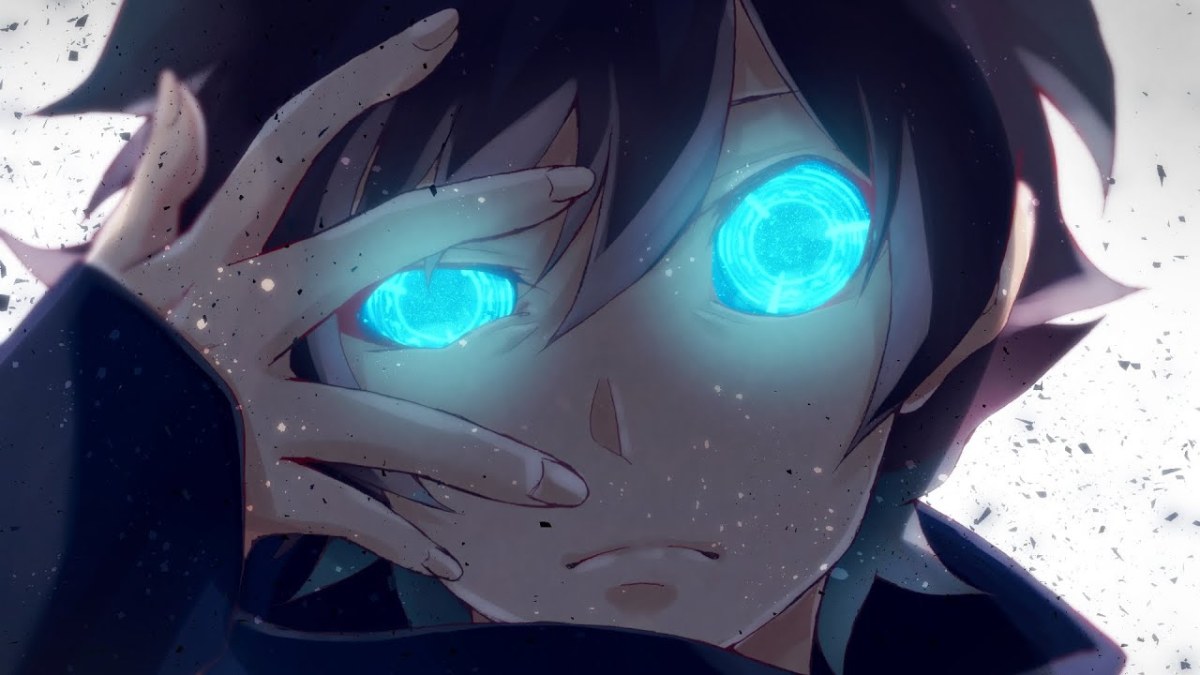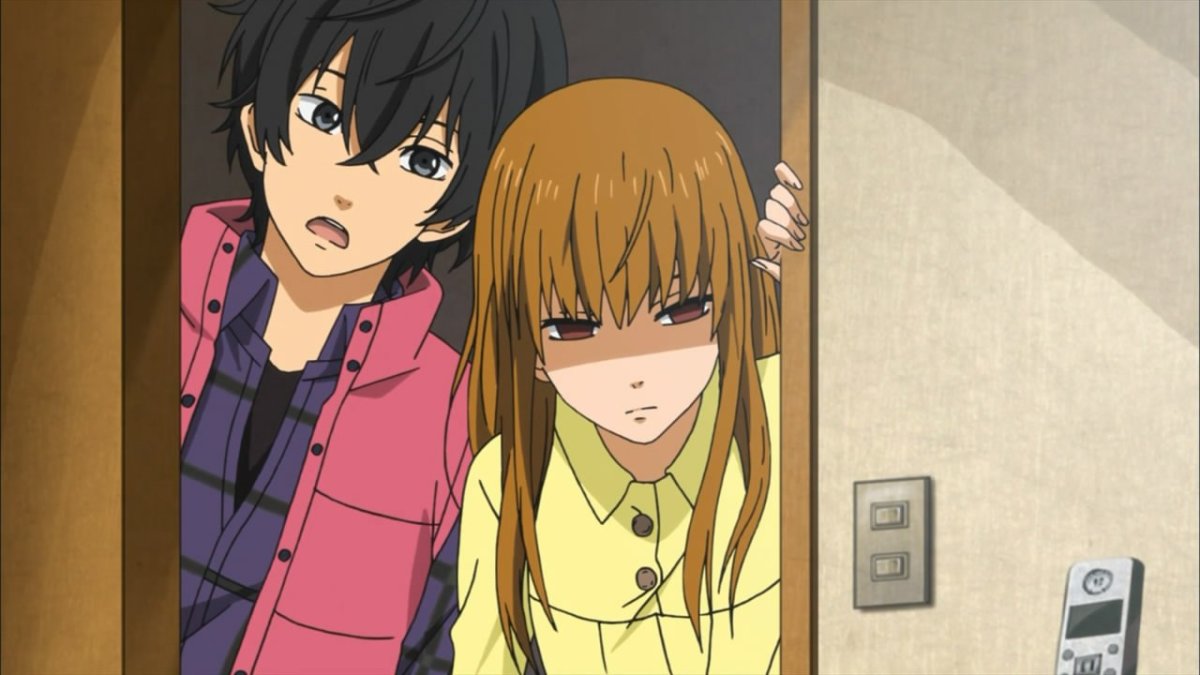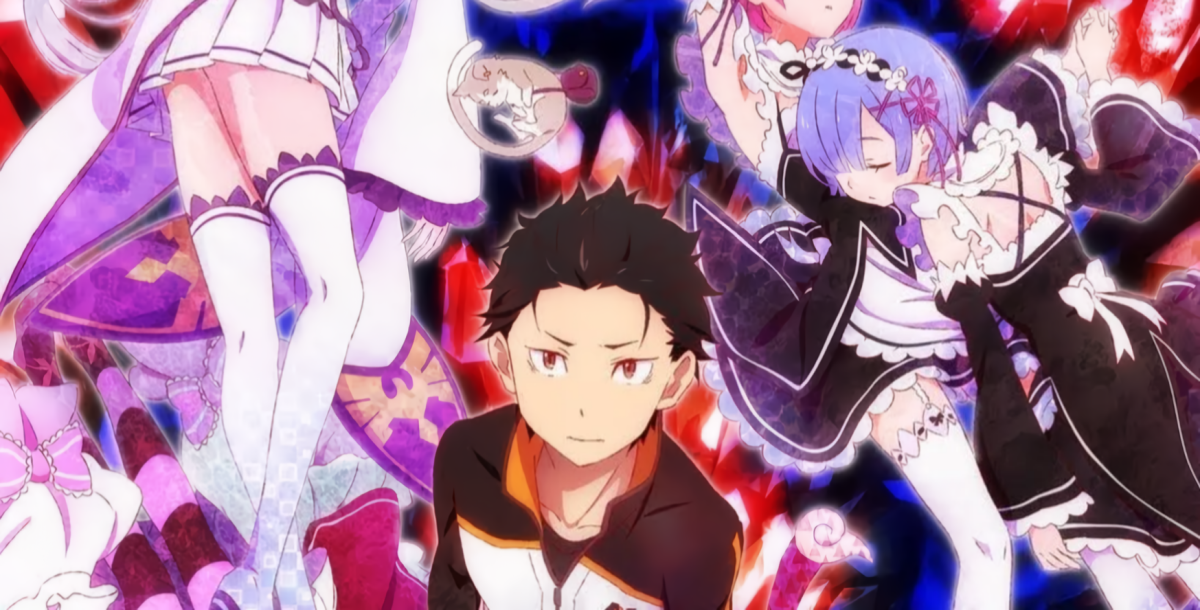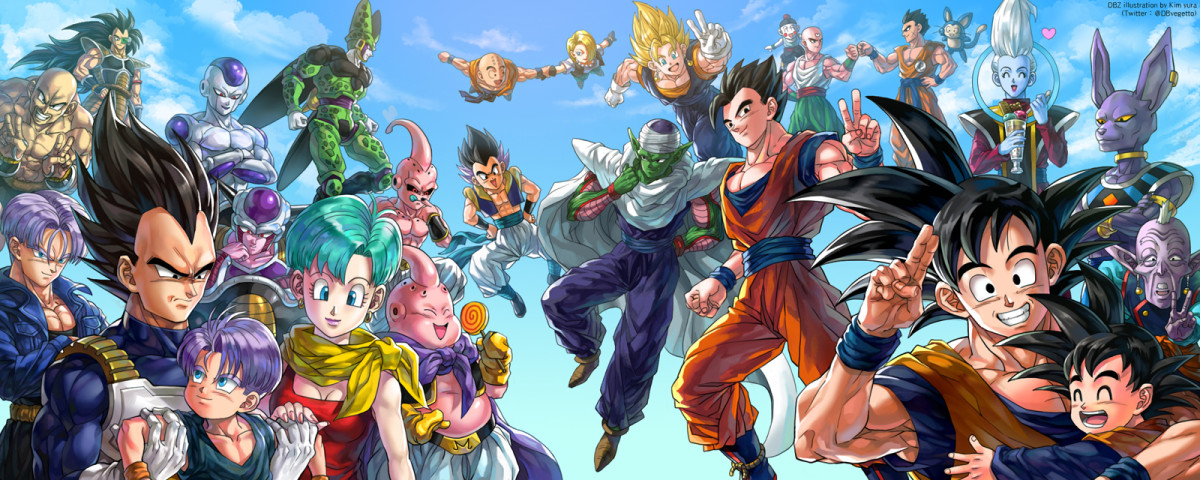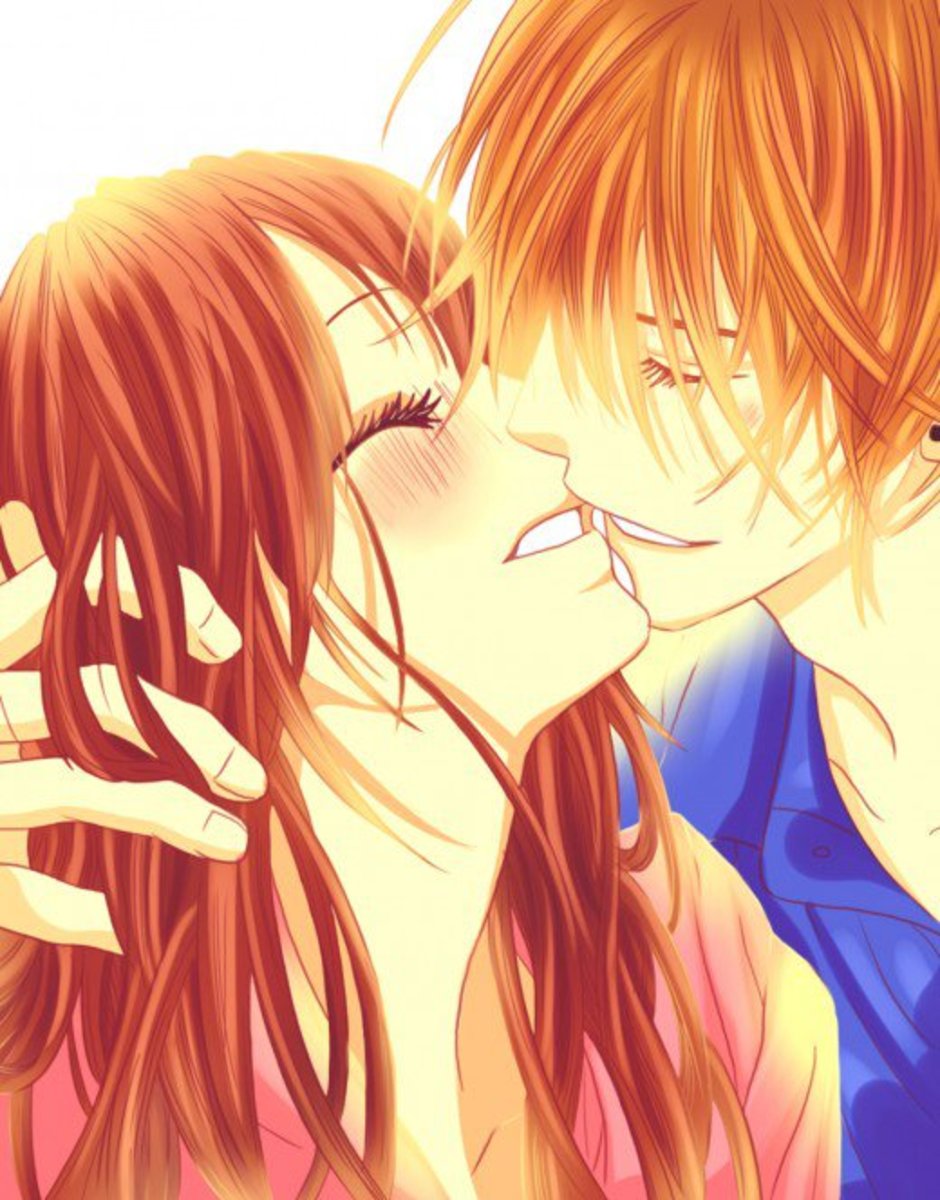Nagi no Asukara (Nagi-Asu: A Lull in the Sea) Anime Review
Although it has grown to have a lot of ideas commonly associated with it, the fantasy setting of narrative is very diverse when it comes to what it can entail. For example, Shinsekai Yori uses fantasy to provide the viewers with a massive "what if" scenario that takes an ominous approach in explaining that evolution and knowledge can be just as harmful as helpful. On the other side of things, Bobobo-bo Bo-bobo shows the setting in a whimsical and blasphemous way that only aims to make its audience emit laughter in its most perplexing form. A common method in fantasy is using its setting to tell the viewer something about human society in general, which would otherwise be impossible or difficult if set in a more realistic world. In the case of Nagi no Asukara, this is the idea of human beings usually preferring familiarity over innovation.
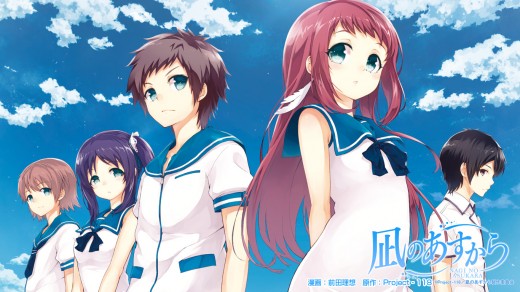
Nagi no Asukara is a 26-episode anime series that was animated by P.A. Works and aired in late 2013 and early 2014. P.A. (Progressive Animation) Works is an animation studio most known for two other anime series named Angel Beats! and Another (which is confounding, considering how different each of these titles are in almost every conceivable way). Nagi no Asukara features an original story by Mari Okada, and its official English title is Nagi-Asu: A Lull in the Sea. I, as well as possibly many others, would have preferred if the official English title were the literally translated Japanese one, From the Calm Tomorrow. I say this because From the Calm Tomorrow, while less descriptive than the official title, is a lot easier to say out loud, and has a more intriguing aura to it than its chosen brethren.
The narrative of Nagi no Asukara centers on four middle school students, who were born and raised in the sea, as they are abruptly shoved onto the surface world. This happens because their local school decided to shut down for no apparent reason.
Characters
Hikari Sakishima is the main protagonist of the series. He's comparable in a lot of ways to Naruto Uzumaki, mainly because he thinks in far larger terms than what he is normally capable of, and often resorts to forceful acts whenever something doesn't go precisely the way he wanted it to. He's different from a lot of the typical anime protagonists in that he is extroverted. Hikari does not adhere in any way to the passive, complacent reputation that anime protagonists have come to garner, especially since the rise of the moe style. The fact that Hikari is extroverted brings a lot in the idea that nihilism and passivity are not the source of his internal conflicts. However, he does not present a rash, repetitively uncompromising demeanor that tends to accompany personalities of his type and age.
Hikari is not afraid of rewriting his basic principles of perception, and this is partially the reason that he is the protagonist, since protagonists are usually the variable when it comes to character casts. Hikari is no exception to this adage, and the audience is allowed to see everything glorious as well as everything shameful that comes along with the re-balancing of one's own mindset.
Manaka Mukaido is the second of the four transfer students from Shioshishio. It's obvious that her and Hikari have a close relationship, but Manaka views their connection in a platonic light whereas Hikari views it as a bit more than that. Unreciprocated feelings aside, Manaka shows a trend towards silliness while showcasing her fragility at the same time. It becomes clear that her subtle naivety is not a direct result of her actions, but instead complying with how little information she was given from an early age. She also seems to be rather unaware of the cultural atmosphere that surrounds her, at least during the early episodes.
Manaka is a dynamic character, but not in the same way as Hikari. Her transformation as a character seems a lot less detailed than the protagonist's, but it is still important nonetheless. From her, the audience is shown the point of view of someone more connected spiritually to the events around her.
Chisaki Hiradaira is the third of the four students from Shioshishio. She appears to be more confident in her actions than Manaka, but is still a lot more susceptible to input from others than her. When it comes to taking action, Chisaki has a great deal of problems. She's afraid of causing any sort of change around her, because she isn't sure what the change will bring or if she will have approval for its results. She doesn't receive a whole lot of characterization throughout the whole series.
Kaname Isaki is the final transfer student from Shioshishio. His main attitude towards most things proves to be one of apathy, or at least he acts like it is. His main message as a character is probably something along the lines of: "people are not limited to what they show at face value." Like Chisaki, he never gets the feeling of being a fully three-dimensional character.
Tsumugu Kihara is a boy raised on the surface that befriends the four Shioshishio denizens. He complements the others in that he is aware of literally everything that is important to the plot of the show. He's quite blunt and coldly logical at times, but it would take some massively sophistic leaps in judgement to conclude that he is being rude because he enjoys it.
Akari Sakishima is Hikari's older sister. She does not bring much in terms of personality, other than being sure of her actions and intentions, as well as having a great deal of compassion for those important to her.
Miuna Shiodome is an elementary school girl that meets the other characters as a result of her showing discontent for the Shioshishio people in general. Being reserved and dependent in her behavior, she relies heavily on others to lead her and usually sticks to the trail of a certain movement, instead of being at the head of it. Her lack of arduousness towards commitment proves to be a major conflict later on in the story, as she's suddenly forced to act on her own.
Sayu Hisanuma is Miuna's best friend. Whenever the two of them do anything together, Sayu is usually the one to set things in order or perform the majority of an action. Sayu is seen by the other characters as trite or non-sentimental. Coinciding with basically every other character in existence to act like this, Sayu's usual behavior is merely a facade she uses to conceal her true moniker.
Uroku is a man who resides in Shioshishio that claims to be "a scale of the sea god." He's capable of causing a few smaller supernatural phenomena, but he is still highly limited as far as his powers go, being that he is not a "true" god. He comes off as arrogant in his treatment of his underlings, and has a substantial amount of wisdom to show for it. Despite his elevated stance, he is still just as lost as the other characters in relation to the events of Nagi no Asukara.
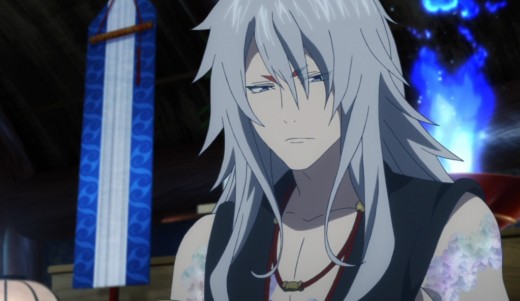
Story
The majority of this series details the subject of traditionalism, its pros and cons, and what effects it commonly has on people who become defined by it. This concept is verbally alluded to countless times throughout Nagi no Asukara when the characters talk about "changing," what it means to them, and whether it is of preference to them.
This is shown most elegantly through Hikari, since the audience is given many details surrounding his dynamics, and the in-depth thought that go into him deciding to change his preconceived notions. The show does a very good job with his character in general, because he is both relatable and full of traits that make him enthralling to watch as he proceeds through his day.
The way that the four main characters interact with one another is also set up quite well. It's rather obvious from the first episode that each of them have a long-reaching history to them, and that they mean a lot to each other. Unfortunately, there isn't much emphasis placed on specific interactions between these characters, since the show is so packed with characters that a fan of The Wheel of Time would probably feel at home when watching this show. If the story wasn't so overpopulated with characters, (or if there were more episodes) then it wouldn't seem as unfocused as it is.
Then there's another idea that Nagi no Asukara has floating around regarding racial relations. There's a few episodes in the first half that are dedicated to replicating early twentieth century United States (to a degree). However, the whole ordeal is concluded lazily, as if the writers were thinking "this is probably a good place to end this on" and then thought nothing else of it.
Still, the show does a decent job of depicting the in-and-outs of inter-racial happenstance, and it should be commended at least for that. Through this, the audience is shown the negative consequences of close-mindedness and traditionalism by having the adults being the ones for whom racism is more prominently expressed, while the children emanate a higher sense of understanding. The children being more open-minded is related to them simply having less experiences in their life that edge them towards ethnocentrism.
The show's emotional aspect is also worthy of exposure. Through all of the character interactions, even though they involve too many identities, we're still left with a sense of empathy for the characters because we're provided with everything necessary to make this feeling possible. Characters give intricate details about their perception, their past, etc., and this all leads into the actions of the characters not ever feeling unwarranted or unexplained. The importance in understanding differing points of view can also be found through this, and I think that this is an key lesson that a lot of poorly-written narratives fail to articulate upon.
Much to my displeasure, the show overdoes a lot of its crucial moments. This is evidenced by how the characters seem to frequently be talking as if the end of the world is always imminent. Having more scenes of characters calming the hell down and having more gradual shifts in emotion could have been enough to fix this issue. Another element that sees overuse is characters crying. It's as if the writers thought that the words and voices of the characters alone would not be enough to evoke a somber response from the viewer. The lachrymal ability of the characters is showcased in almost every episode, and often multiple times in the same episode. It's safe to say that anything, no matter how authentic or carefully orchestrated, will begin to lose its effect once it is employed an umpteen amount of times. One scene in particular had a character shedding tears half as big as her eyes, making it hard for me to take it seriously because I was mentally face-palming at the time.
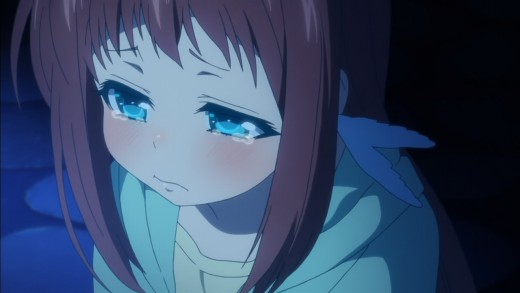
The main tool that Nagi no Asukara utilizes to create drama and tension is that of making characters infatuated with each other. This in itself is not a faulty idea, but the way at which the series chooses to portray these instances makes it come off as immature and shallow. The characters rarely go beyond saying "I like/love x" when it comes to conveying these emotions, meaning that the show completely misunderstands the point of including romance in a narrative. When characters show us why they have a romantic interest in someone else, this allows the audience to comprehend more about both of the characters involved, and can make everything feel more wholesome in return. Since Nagi no Asukara does not do this, what is left is a bunch of sensationalist drama that is equal parts stale and juvenile. Yes, they are still teenagers, but I can say for certain that most teenagers have some idea of deeper connection in mind that is fundamentally different from the binary infatuation/friend meter that Nagi no Asukara seems to have adopted. Even with this, the show has some semblance of showing deep compassion between characters, if only for brief moments.
The male characters don't seem to care about each other nearly as much as they do the smorgasbord of female characters. I'm worried that this could send a subliminal message to younger viewers that teaches them that "heterosexual males can't be more than buddies." In fact, the amount of male-to-male conversation in this show is so minuscule, and the dialogue that occurs when they actually do converse is so narrow that it's practically the antithesis of Ginga Eiyuu Densetsu. This would be fine if the rest of the show was teeming with stoicism, but since it's trying to decorate your room with tissues, the low male-to-male interaction feels contrived for the amount of male characters it has.
Animation & Sound
P.A. Works delivers exceptionally stellar animation in Nagi no Asukara. It's safe to say that water is one of the more difficult things to animate, and the fact that it was done so well here makes the show's scenery marvelous to look at. The remainder of the animation doesn't miss a beat. I literally cannot think of a single part over all 26 episodes in which anything looked unnatural or choppy.
I can't remember a whole lot about the soundtrack, other than that there's one song with a piano intro that made it sound like it came from Clannad. The remainder of the tracks fit pretty well with the setting, but they aren't greatly memorable. The voice actors put droves of emotion into their speech, and hold back when necessary, so nothing too noticeable there.
Conclusion
Nagi no Asukara is a decently qualitative and entertaining production that keeps the attention of the viewer throughout its entire running time by utilization of a variety of methods. It fulfills its ideas about traditionalism well, and does a great job of having the audience connect with its characters who are flawed, but still likable. It seems scatterbrained in a lot of areas because it uses far too many characters and ideas than is cover-able for a 26-episode series. It's overly-dramatic in a lot of parts, the romantic endeavors are focused on more than they should be, and there isn't a whole lot to them in retrospect. Characters crying too much and too soon leads to the desensitization of tears in general for this show. The production values are outstanding, and not should be overlooked. Overall, I think that Nagi no Asukara is at least good, but its long list of flaws keep it from being great, so much so that I believe it will be soon forgotten along with everything else that is only slightly above average.

